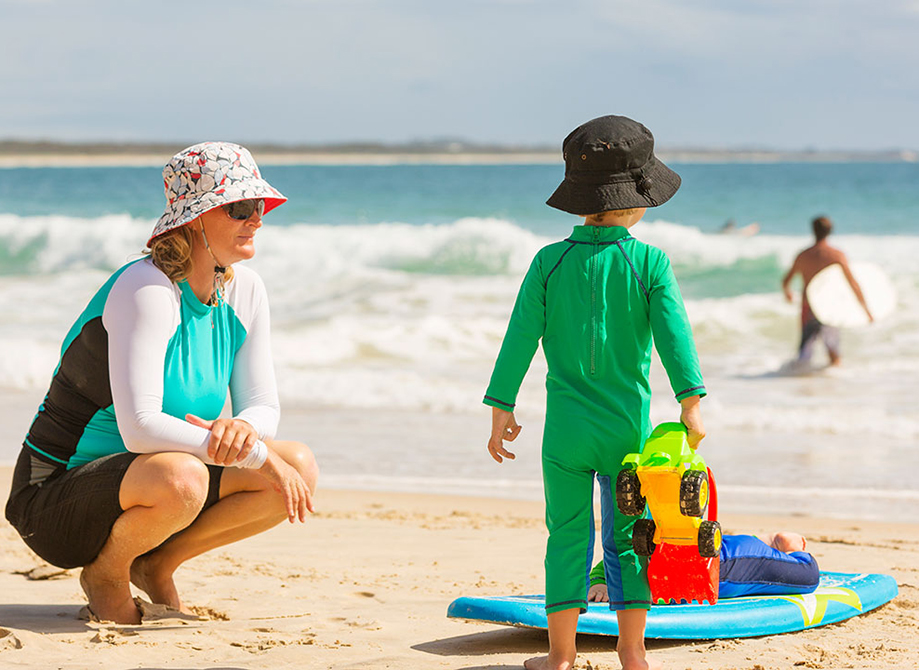Sunlight is an indispensable part of our lives, infusing nature with vitality and enriching our daily experiences. While basking in the sun can bring numerous benefits, it is crucial to understand how to safely enjoy its warmth while minimizing potential risks. I’ll delve into the advantages and dangers of sunlight, the impact of ultraviolet (UV) rays, the uneven protection offered by different light types, and essential precautions to take when exposing yourself to the sun. By following these guidelines, you can enjoy the sun’s benefits while safeguarding your health.
The Benefits and Dangers of Sunlight
The Benefits of Sunlight
Exposing yourself to sunlight in moderation can offer several health benefits. First and foremost, sunlight is a natural source of vitamin D, which is crucial for maintaining healthy bones. Vitamin D facilitates the absorption of calcium, thereby supporting bone and dental health. Furthermore, sunlight can enhance mood and reduce symptoms of depression. The exposure to natural light boosts the production of endorphins, improving your overall sense of well-being. Sunlight also plays a role in strengthening the immune system, helping your body fend off infections and diseases.
The Dangers of Sunlight
Despite its benefits, excessive exposure to sunlight can pose significant risks. One of the most pressing concerns is skin cancer. UV radiation from the sun is a leading cause of skin cancer, especially with prolonged exposure to intense sunlight. The risk of skin cancer increases with age, but even younger individuals are not immune. Additionally, overexposure to sunlight can accelerate skin aging, resulting in wrinkles, age spots, and loss of skin elasticity. Eye damage is another serious issue; UV radiation can contribute to cataracts and other ocular conditions.
Ultraviolet Rays: Understanding Their Impact
Types of Ultraviolet Rays
Ultraviolet (UV) rays are categorized into three types: UVA, UVB, and UVC. UVA rays penetrate the skin’s surface, causing premature aging and wrinkles, and are a significant contributor to skin cancer. UVB rays are responsible for sunburn and are another major risk factor for skin cancer. UVC rays have the highest energy levels but are mostly absorbed by the Earth’s atmosphere, so they generally do not pose a direct threat to us.
The Impact of UV Rays
The effects of UV rays on the skin are cumulative over time. Even on cloudy days or during winter, UV rays can penetrate through clouds and cause skin damage. UV radiation harms the DNA in skin cells, leading to mutations that increase the risk of skin cancer. Additionally, UV rays can break down the skin’s elastin fibers, resulting in premature aging signs such as loss of firmness and wrinkles.
Light Types: Uneven UV Protection
UV Protection by Skin Type
Different skin types offer varying degrees of natural protection against UV rays. For instance, lighter skin has less natural protection compared to darker skin, making it more susceptible to sunburn. People with lighter skin need to apply sunscreen more frequently and be extra cautious about sun exposure. Conversely, individuals with darker skin have a higher natural resistance to UV rays but should not neglect sunscreen use.
UV-Protective Clothing
Wearing UV-protective clothing is an effective way to shield yourself from harmful rays, especially in areas with intense sunlight. These garments are treated with special UV-blocking chemicals and can significantly reduce UV exposure. Clothing labels often indicate the Ultraviolet Protection Factor (UPF) of the garment, with higher UPF values providing better protection.

Exposing Yourself to the Sun: Precautions
Using Sunscreen
Sunscreen is a vital tool for protecting your skin from UV damage. I always choose sunscreens with SPF 30 or higher and apply it about 30 minutes before heading outdoors to ensure proper absorption. Sunscreen should be reapplied every two hours, especially after swimming or sweating. Don’t forget to cover areas like your ears, neck, and the back of your hands, which are often overlooked.
Wearing Protective Gear
In addition to sunscreen, wearing wide-brimmed hats, sunglasses, and long-sleeved clothing provides additional protection. A wide-brimmed hat shields your face and neck from direct sunlight, reducing UV exposure. High-quality sunglasses protect your eyes from UV rays, helping to prevent cataracts and other eye conditions. Long-sleeved clothing and UV-protective fabrics further minimize direct sun exposure.
Avoiding Peak Sun Hours
Minimizing exposure during peak sunlight hours, typically from 10 AM to 4 PM, helps reduce UV exposure. If you need to be outside during these hours, seek shade or wear protective gear. Opting for early morning or late afternoon outdoor activities not only lowers your UV risk but also allows you to enjoy more comfortable weather conditions.
After Sun Exposure: Good Practices

Hydrating and Nourishing Your Skin
After spending time in the sun, your skin may become dry and dehydrated. I always use moisturizing creams and restorative skincare products in the evening to help replenish moisture and restore skin elasticity. Drinking plenty of water is also crucial for maintaining skin hydration and preventing dryness and peeling.
Monitoring Skin Health
Prolonged sun exposure can lead to skin issues such as age spots, wrinkles, and even signs of skin cancer. Regularly check your skin for any new or changing spots, particularly if they appear unusual. If you notice any concerning changes, seek medical advice promptly. Maintaining a healthy lifestyle, including a balanced diet and adequate sleep, supports skin health and recovery.
Enjoying the Sun Responsibly
Sunlight can enhance our well-being and add vibrancy to our lives. By following the right precautions, you can enjoy the sun’s benefits while protecting your health. The key to enjoying sunlight lies in moderation and prevention. I hope these tips help you make the most of sunny days while staying safe and healthy.
During my journey through Norway, exploring the diverse landscapes and rich culture of this beautiful country allowed me to experience the incredible blend of nature and humanity. From the majestic fjords to the tranquil towns, every scene was mesmerizing. However, travel is not just about sightseeing; it’s also about learning how to take care of oneself, especially when it comes to sun protection.
Walking under the Norwegian sun, I realized that even though Norway’s sunlight is not as intense as that in tropical regions, proper protection remains crucial. Every adventure, whether hiking on glaciers or enjoying a sunset by the sea, requires adherence to appropriate sun safety measures. This ensures that I can enjoy my time while safeguarding my skin and overall health.
My journey through Norway has not only revealed nature’s grandeur but also highlighted the importance of self-care. Whether you are marveling at the Northern Lights or relaxing on a serene beach under the blue sky, always keep your health in mind. Proper sun protection, good skincare, and an understanding of sunlight will make your travels even more enjoyable and turn every ray of sunshine into a cherished memory.
May your future travels allow you to enjoy nature’s beauty fully while remaining in the best possible health. By taking care of yourself, you can explore the most enchanting corners of the world and make every unforgettable experience even more delightful. Stay healthy, protect yourself, and make the most of every adventure.
